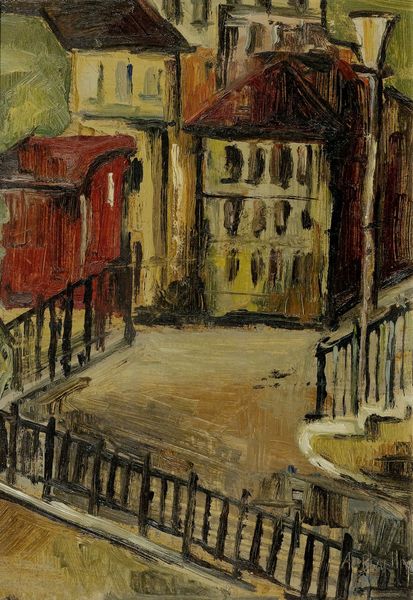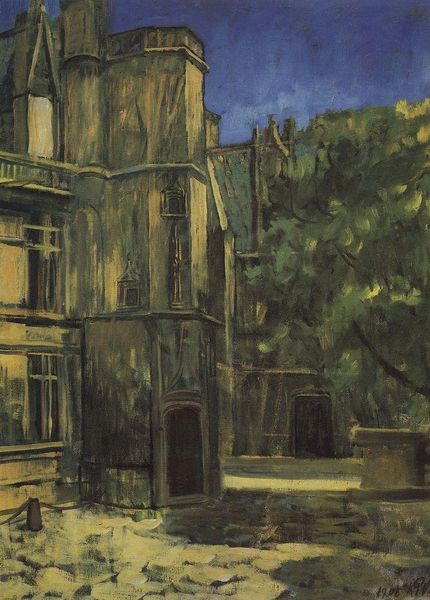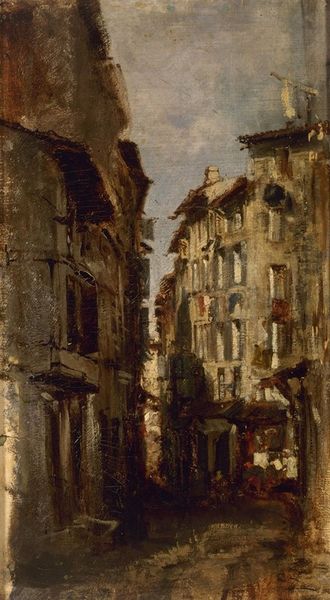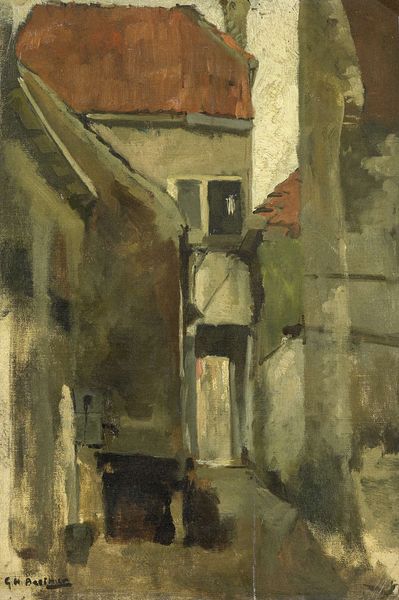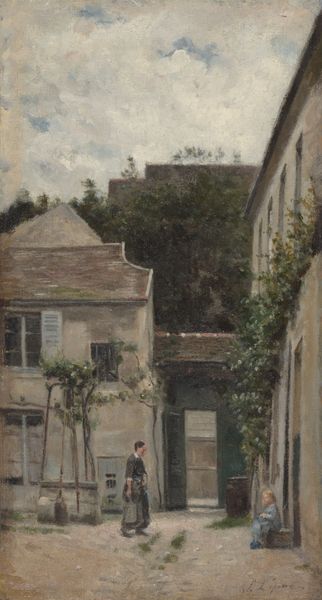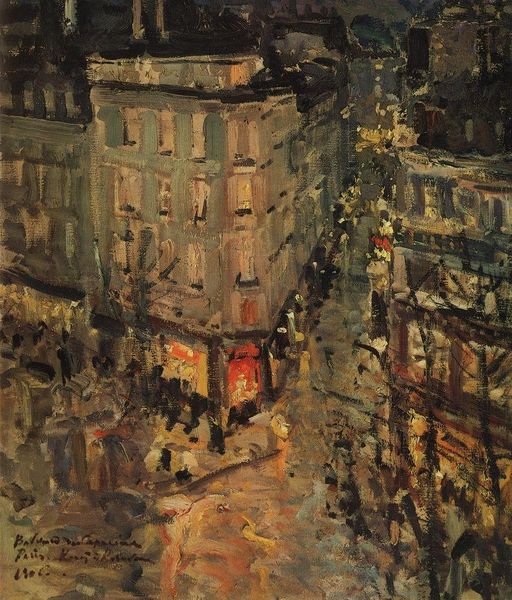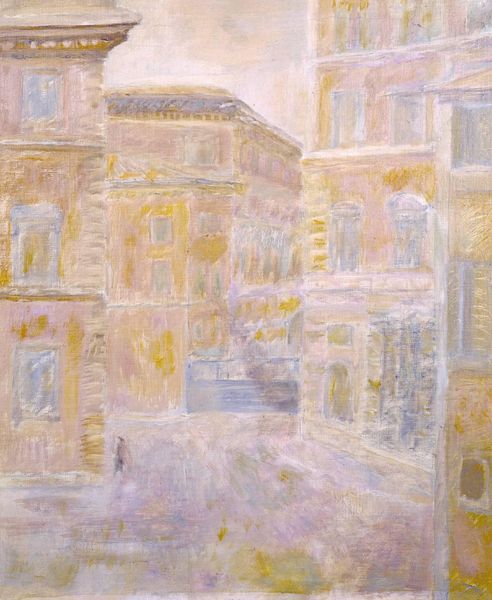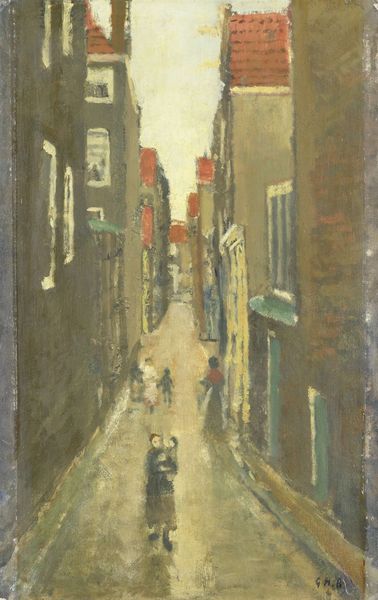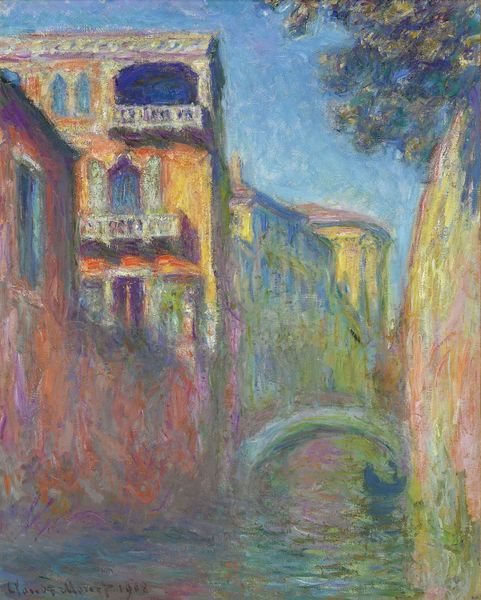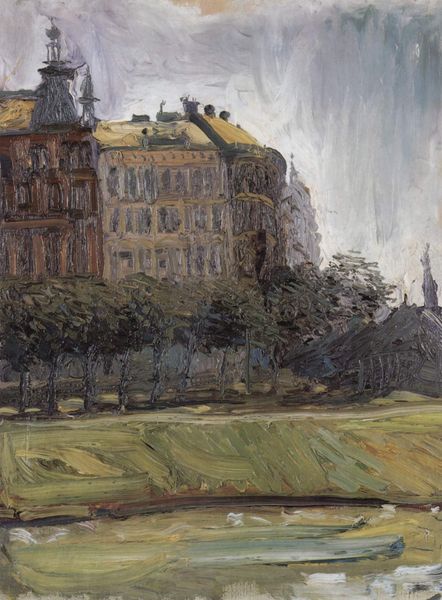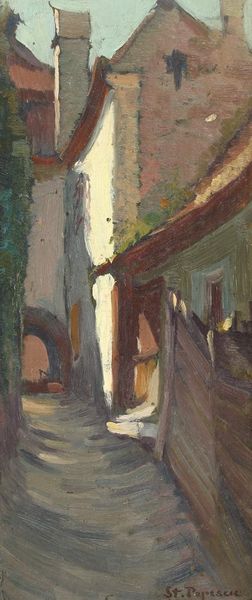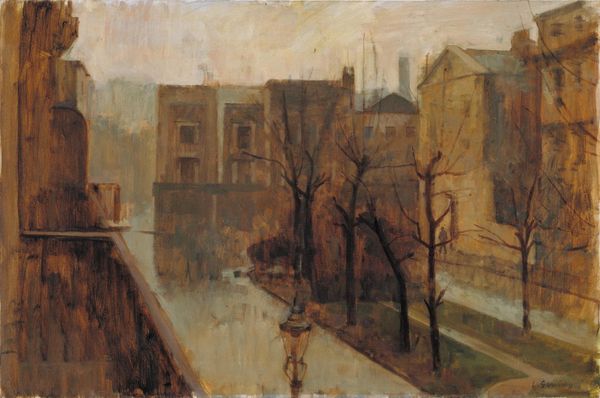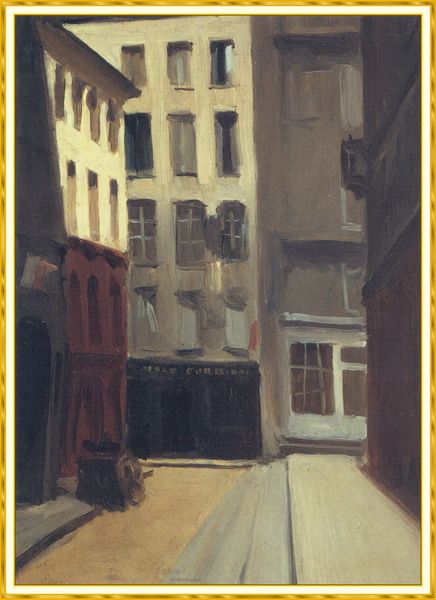
Dimensions: support: 612 x 502 mm frame: 878 x 775 x 62 mm
Copyright: CC-BY-NC-ND 4.0 DEED, Photo: Tate
Editor: Sickert's "Les Arcades de la Poissonnerie, Dieppe," currently residing at the Tate, feels almost like a memory, rendered in muted tones. The architecture seems to loom, yet it's also softened. What symbols do you see at play here? Curator: The arcades themselves are potent. They signify transition, thresholds between public and private, known and unknown. Note how Sickert obscures details, suggesting hidden narratives. The lack of vibrant colour emphasizes the weight of history, a cultural memory fading. Editor: Fading, but still present. It makes me think about how places hold onto echoes of past lives. Curator: Precisely. Sickert, with his interest in the everyday, transforms the ordinary into something imbued with psychological depth. What do you suppose the title implies about the unseen activity? Editor: The fish market… commerce, community, and perhaps a bit of the gritty reality of life. Curator: Indeed. The painting invites us to consider the layers of human experience embedded in this architectural space. I appreciate you noticing the emotional undercurrents. Editor: It’s been eye-opening to consider those hidden narratives. Thanks!
Comments
tate 6 months ago
⋮
http://www.tate.org.uk/art/artworks/sickert-les-arcades-de-la-poissonnerie-dieppe-n05045
Join the conversation
Join millions of artists and users on Artera today and experience the ultimate creative platform.
tate 6 months ago
⋮
Following the breakdown of his marriage, Sickert moved to Dieppe in 1898, where he remained for the next seven years. 'I cannot stand another winter in London', he had written, 'It is too dark and life is too short.' He devoted himself solely to painting the town, capturing its ordinary and slightly shabby streets and houses with an informal naturalism. His friend Jacques-Emile Blanche, the French painter, wrote 'No other artist has so perfectly felt and expressed the character of the town, whose Canaletto he has become.'The Arcades de la Poissonnerie are next to the harbour in Dieppe. Gallery label, September 2004
